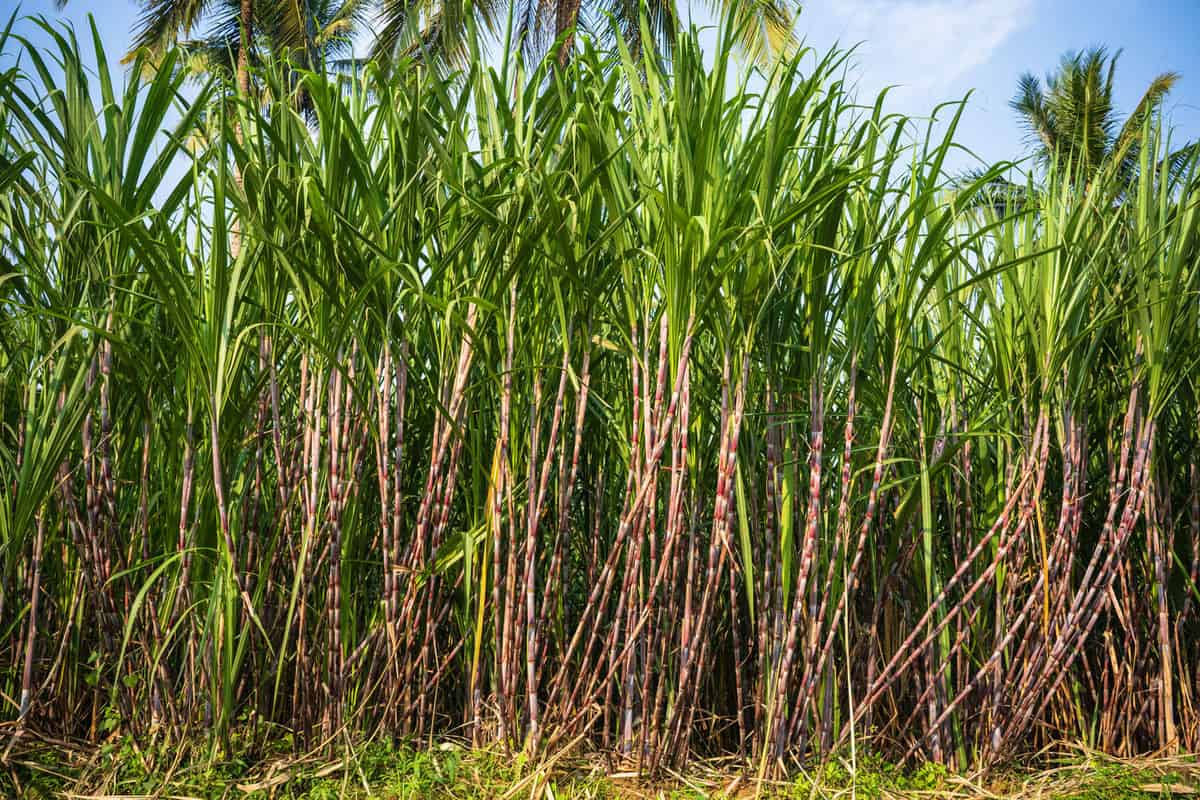Sugarcane is a popular crop known for its sweet and versatile nature, and you can definitely plant them in your garden if you have a big enough space.
But you might wonder if its roots present any problems for your garden or yard.

When planting sugarcane, it's essential to understand its root system and potential impact on the surrounding environment.
Below we will discuss sugarcane's root system and answer your question on whether it has invasive tendencies.
Sugarcane: Sweet Tropical Grass
Sugarcane is a tropical and subtropical grass that has been cultivated for ages as a primary source for sugar.
It grows best in warm climates and well-draining soil, where they can easily sprout from stem cuttings.
Typically, they are planted in single rows or multiple parallel rows, with a distance of four to ten feet between them.
When planting, a furrow is dug about six inches deep, and fertilizer is applied to promote growth and ensure a healthy crop.
Sugarcane's Root System
Sugarcane has a unique root system which comprises predominantly of fibrous roots that spread throughout the soil. This helps the plant establish a robust and vigorous growth.
One noticeable characteristic of sugarcane roots is their ability to continually form new roots throughout the growing season.
This characteristic allows sugarcane to adapt to different soil types and growing conditions efficiently.
As a result, sugarcane can be grown in various climates and regions around the world.
How Deep Do Sugarcane Roots Grow?
The depth of sugarcane roots can vary depending on factors such as soil type, moisture, and nutrient availability. However, on average, sugarcane roots can grow to depths of 4.25 m to 4.7 m.
It's important to note that the majority of roots usually remain within the top of soil. it is a wide spreading and shallow-rooting grass.
This shallow rooting can facilitate easy cultivation, but it also means that the plants could be prone to drought and require consistent irrigation to thrive.
Are Sugarcane Roots Invasive?
Sugarcane roots are fibrous and tend to be quite extensive, but not in the same manner as truly invasive species.
While they do expand in search of nutrients and water, they do not typically pose significant threats to nearby structures.
Sugarcane roots are not invasive in the typical sense.
Although they have an extensive root system, they mostly stay within the boundaries of their planting area and do not cause harm to the surrounding environment.
Does Sugarcane Ruin Soil?
Sugarcane cultivation, like many intensive agricultural practices, can have both positive and negative impacts on soil health.
The effect of sugarcane on soil depends on the agricultural practices employed, the duration of cultivation, and the initial health of the soil.
Here's an overview:
Positive Impacts on Soil
1. Organic Matter and Soil Structure
Mature sugarcane leaves, trashed during harvest, can be left on the field. This trash mulch decomposes and adds organic matter to the soil, improving soil structure.
2. Root System
The fibrous root system of sugarcane can help in preventing soil erosion, especially in regions prone to heavy rainfall.
3. Crop Rotation
When sugarcane is rotated with leguminous crops or other cover crops, it can benefit from nitrogen fixation and a break in pest and disease cycles.
Negative Impacts on Soil
1. Nutrient Depletion
Intensive sugarcane cultivation, especially when it's repeatedly grown without crop rotation, can lead to depletion of vital soil nutrients.
Sugarcane is a heavy feeder, and without proper nutrient management, the soil can become less fertile over time.
2. Soil Acidification
Overuse of certain chemical fertilizers can lead to soil acidification. Acidic soils can limit the availability of essential nutrients for plants.
3. Soil Compaction
Mechanized harvesting equipment and tractors can lead to soil compaction, especially when the soil is wet.
Compacted soil reduces water infiltration and root growth, leading to reduced yields.
4. Chemical Residues
Pesticides and herbicides used in sugarcane cultivation can leave residues in the soil, affecting soil microbes and potentially contaminating groundwater.
5. Waterlogging
In some regions, sugarcane is grown with flood irrigation. Inappropriate or excessive irrigation can lead to waterlogged conditions, which can adversely affect soil health and crop yields.
Management and Control
Even though sugarcane do not have invasive roots, it's essential to implement management and control strategies if you plan to plant them in your area.
One effective way to manage sugarcane roots is through mechanical control.
You can use a combination of hand-pulling small plants, cutting, and mowing larger plants to reduce their spread.
Remember to remove the entire root system when hand-pulling to prevent unwanted regrowth.
Regular monitoring, appropriate spacing, and potential use of root barriers can help ensure sugarcane doesn't interfere with other plants or structures
Non-invasive and Can Be Planted in Home Gardens
While it's true that sugar cane has a robust root system, it does not possess the characteristics of invasive plants that can harm the environment or native species.
Just ensure that you plant them in an area with adequate space as you expect its roots to grow both horizontally and vertically.
With proper management, sugarcane can be a valuable and environmentally friendly addition to gardens and commercial farms alike.
To learn more about other plants and their root systems, check out these other articles:
